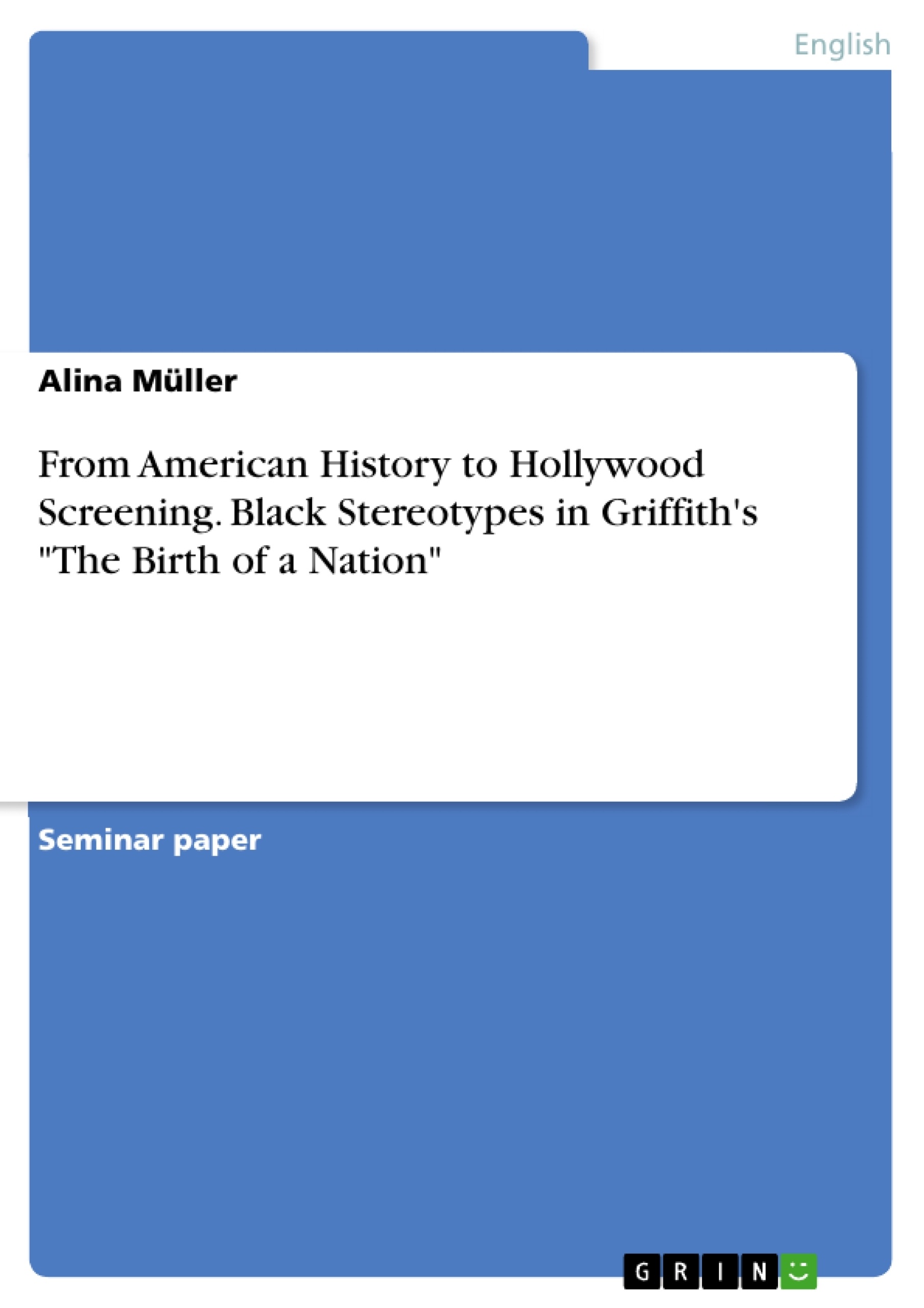The spectacular but controversial film "The Birth of a Nation", written in 1915 and directed by a white supremacist D.W. Griffith, was “hailed as a picture without peer” and praised for being one of the most successful silent films by the audience of its time (Rylance 1). At the same time, however, it became the subject of a great dispute over its racial politics. Griffith, for example, partly denies critiques of racial implications in his film. Using black stereotypes in the Birth, his main purpose was to depict the historical reality of the American past. His aim was revealed in the following statement from the film: “This is an historical presentation of the Civil War and Reconstruction Period, and is not meant to reflect on any race or people today” (1:28:13). Referring to the Jim Crow period, when blacks were subordinated and exploited, Griffith intended “partly to show the undeserved and unearned prosperity of blacks during Reconstruction” (Wallace 87). In other words, Griffith’s purpose was to emphasize the supremacy and restored rule of the whites in the antebellum South.
This paper analyzes the black stereotypes in The Birth of a Nation. In particular, it is concerned with the characters played in blackface such as the Uncle Tom, the Mammy, the Jezebel (Lydia Brown) and the Brutal Black Buck (Sylas Lynch). It will examine how these character types fit to the black stereotypes which existed since slavery and became popular in American life. Through an analysis of the characters, this paper will also reveal Griffith’s position toward racial justice and American identity.
Inhaltsverzeichnis (Table of Contents)
- Introduction
- The Good African Americans
- The Uncle Tom: A Loyal Slave
- The Mammy: A Faithful Servant
- The Evil Mulattos
- Lydia Brown: The Jezebel
- Silas Lynch: The Brutal Black Buck
- Conclusion
Zielsetzung und Themenschwerpunkte (Objectives and Key Themes)
This paper analyzes the black stereotypes in D.W. Griffith's film *The Birth of a Nation*, focusing on characters played in blackface, such as the Uncle Tom, the Mammy, the Jezebel (Lydia Brown), and the Brutal Black Buck (Silas Lynch). It examines how these character types fit into existing black stereotypes that emerged during slavery and became popular in American life. Through an analysis of these characters, the paper aims to reveal Griffith's position toward racial justice and American identity.
- The portrayal of black stereotypes in *The Birth of a Nation* and their historical context.
- The analysis of specific blackface characters and their representation of racial prejudice.
- The exploration of D.W. Griffith's perspective on race and American identity.
- The examination of the film's impact on the development of racial stereotypes in American cinema.
- The influence of the film's narrative on perceptions of Reconstruction and the Southern experience.
Zusammenfassung der Kapitel (Chapter Summaries)
- Introduction: The paper introduces *The Birth of a Nation* as a controversial film, highlighting its depiction of racial politics and the debate surrounding its historical accuracy. It explores the conflicting perspectives on the film's purpose, with Griffith claiming to depict historical reality while critics argue that it reinforces racial stereotypes.
- The Good African Americans: This section examines the portrayal of the "Uncle Tom" figure in *The Birth of a Nation*. It analyzes the physical and character traits associated with this stereotype, demonstrating how the film's depiction aligns with the historical image of the docile and submissive slave. The analysis highlights the Uncle Tom's role as a loyal servant, his inability to cope with freedom, and his cultural connection to the slave community through acts like dancing.
Schlüsselwörter (Keywords)
The key terms and concepts explored in this paper include: *The Birth of a Nation*, D.W. Griffith, black stereotypes, blackface, Uncle Tom, Mammy, Jezebel, Brutal Black Buck, Reconstruction, racial justice, American identity, film history, historical accuracy, and racial representation.
- Arbeit zitieren
- Alina Müller (Autor:in), 2014, From American History to Hollywood Screening. Black Stereotypes in Griffith's "The Birth of a Nation", München, GRIN Verlag, https://www.hausarbeiten.de/document/295749


